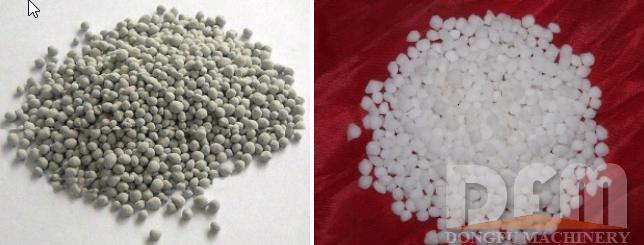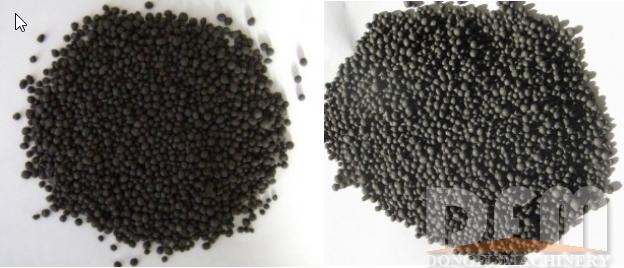Wet Granulation: The process of adding a liquid solution to powders involves the massing of a mix of dry primary powder particles using a granulating fluid. The fluid contains a solvent that must be volatile, so that it can be removed by drying, and be non-toxic. Typical liquids include water, ethanol and isopropanol, either alone or in combination. The liquid solution can be either aqueous-based (safer) or solvent-based. Water mixed into the powders can form bonds between powder particles that are strong enough to lock them together. However, once the water dries, the powders may fall apart. Therefore, water may not be strong enough to create and hold a bond. In such instances, a liquid solution that includes a binder is required. Once the solvent/water has been dried and the powders have formed a more densely held mass, then the granulation is milled.
The process can be very simple or very complex depending on the characteristics of the powders and the available equipment. In the traditional wet granulation method, the wet mass is forced through a sieve to produce wet granules that are subsequently dried. A subsequent screening stage breaks agglomerates of granules. Organic solvents are used when water-sensitive drugs are processed, as an alternative to dry granulation, or when a rapid drying time is required. Because direct compressing is not the best technology for many active substances, wet granulation is still a preferred method. Even if the active substance is sensitive to hydrolysis, modern equipment (a fluidized bed, for example) eliminates all problems in wet granulation.

Dry Granulation: This process is used to form granules without using a liquid solution, because the product to be granulated may be sensitive to moisture and heat or does not compress well. Forming granules without moisture involves compacting and size reduction of the mix to produce a granular, free flowing blend of uniform size. Thus, the primary powder particles are aggregated under high pressure using swaying or high shear mixer-granulators. Dry granulation can be done in two ways: either a large tablet (slug) is produced in a heavy duty tableting press or the powder is squeezed between two rollers to produce a sheet of materials (roller compactor/chilsonator). When a tablet press is used for dry granulation, the powders may not possess enough natural flow to feed the product uniformly into the die cavity, resulting in varying degrees of densification. The double roller granulator (granulator-compactor) uses an auger-feed system that will consistently deliver powder uniformly between two pressure rollers. The powders are compacted into a ribbon or small pellets between these rollers and milled through a low-shear mill. When the product is compacted properly, it can then be passed through a mill and final blend before tablet compression.

Finally, wet granulation involves the production of a granule by the addition of liquid binders to the powder mixture. Both continuous direct compression (CDC) and continuous mixing for the dry granulation processes involve the individual loading and accurate feeding of the API and a variety of excipients to a continuous blender.
Contact: DFM Fertilizer Machine
Phone: +86-13663722676
E-mail: andy@zzdfm.com
Add: No. 37 Yuxiang Road, High Tech Zone, Zhengzhou City, Henan, China